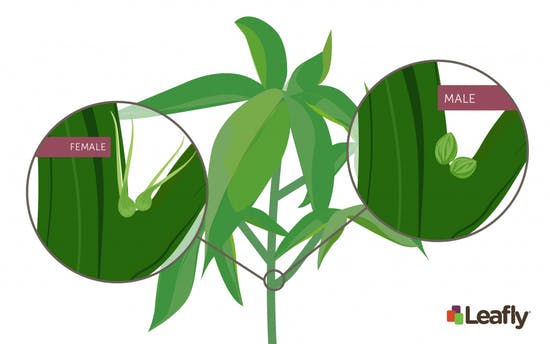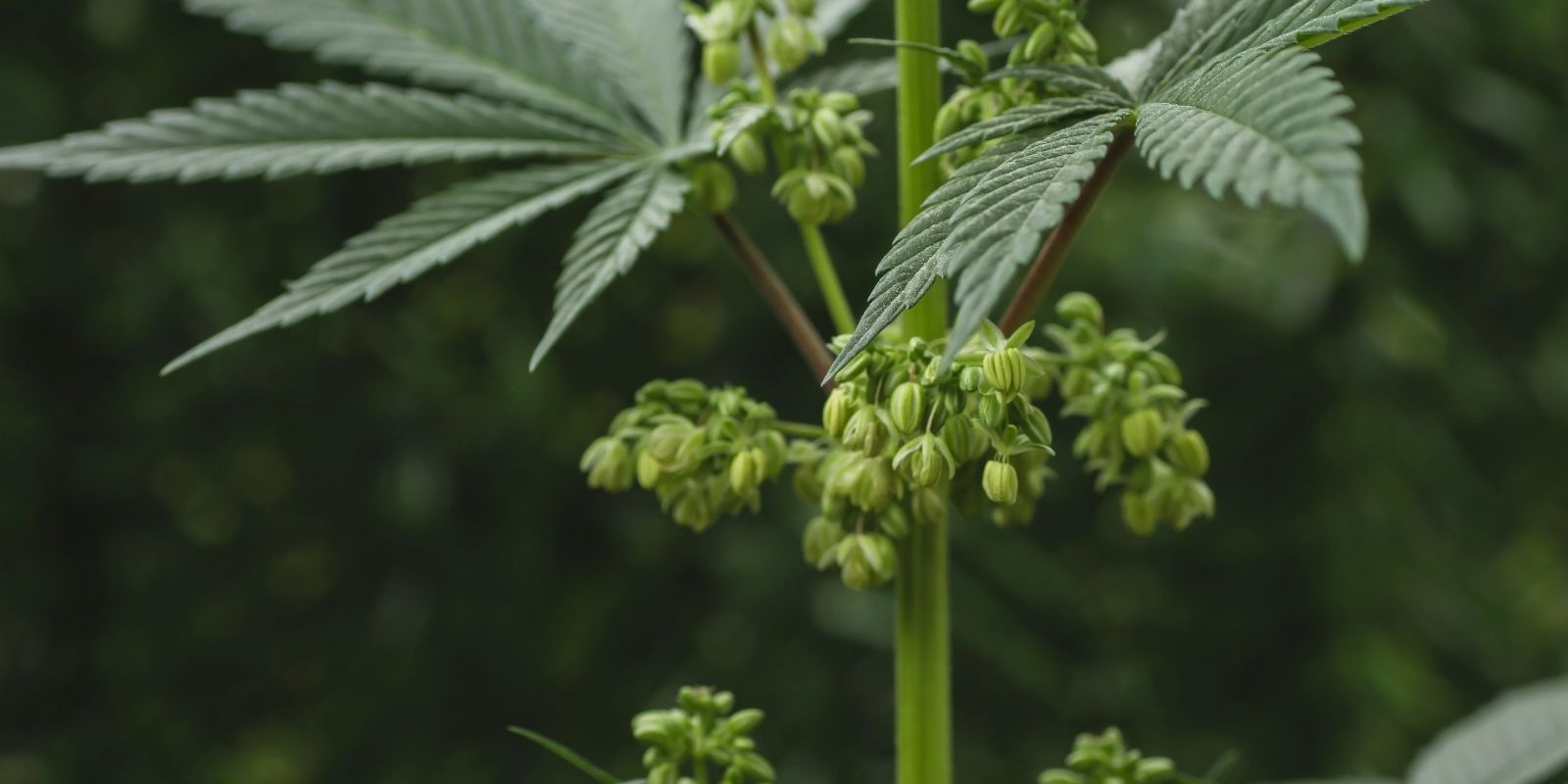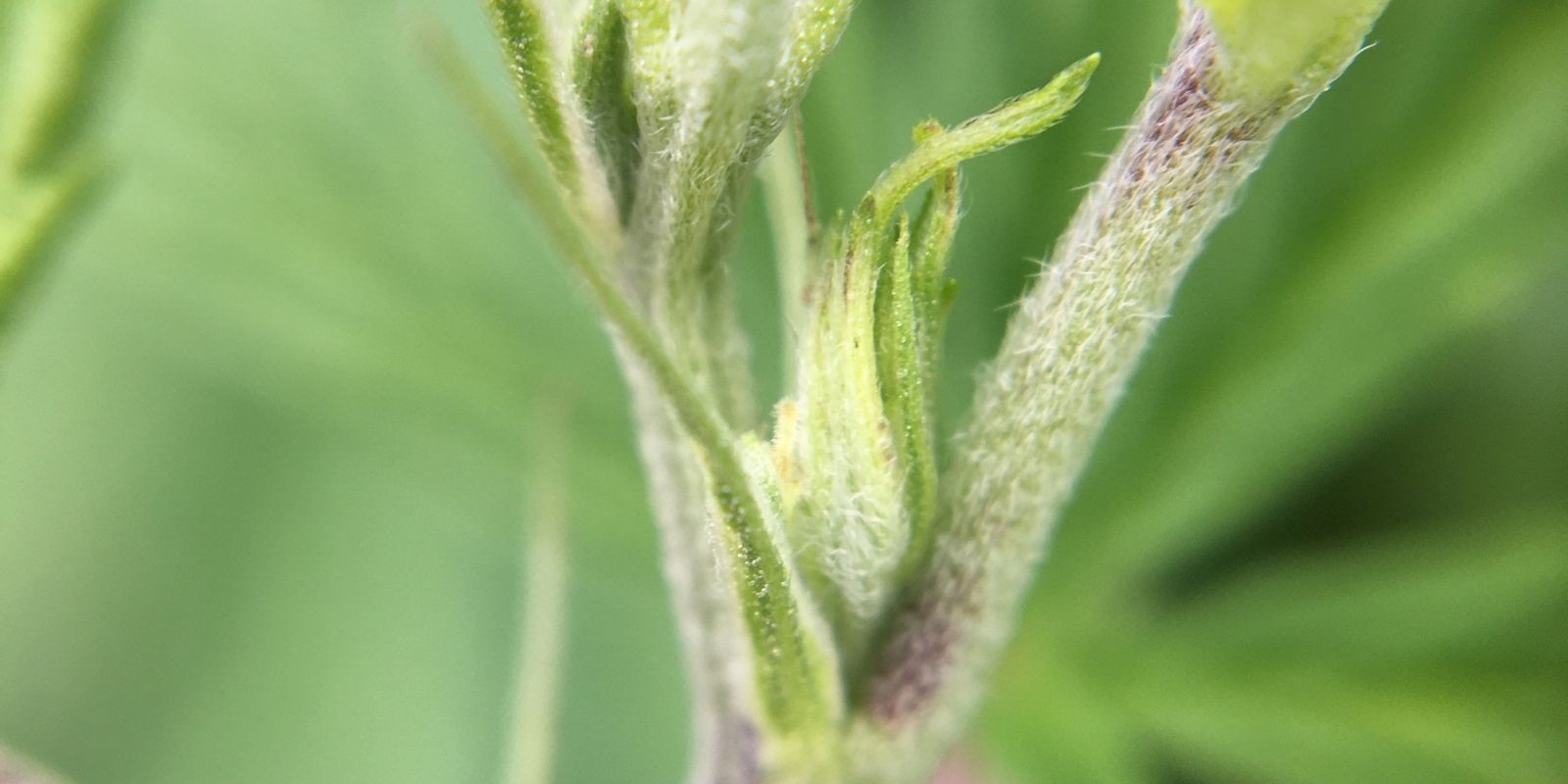You may have been wondering how to tell the sex of your cannabis plants. Many new cannabis growers are worried about this and for a good reason. Whether you’re a first-time grower or an experienced pro, knowing the difference between male and female marijuana plants is extremely important for a successful harvest. In this post we will go over what sexing cannabis plants involves and why it matters so much. We also cover some basic tips to help you grow female cannabis plants from seedlings with a near 100% success rate.
First off, Why Does it Matter? Female Plants Produce Cannabinoid-Dense Buds
Chances are even if you don’t grow marijuana, you probably have heard that only the female plants produce the type of buds growers want for either recreational or medical properties. Male plants contain far less THC and other compounds sought after in a cannabis grow. Plus, they don’t actually produce buds at all, but we’ll explore that in more detail later on when we look at the anatomy of male versus female plants.
New and veteran growers alike are always hoping to prevent the introduction of any male plants into their garden, but it is not always so easy. One reason for this is because naturally the ratio is usually around 50/50 male to female upon germination of a seedling, and the process for sexing cannabis plants can be difficult to perform with any accuracy early on in growth.
Are you planting outdoors? Don’t think this info is any less important. Learn to identify female marijuana plants before you transplant from containers, and you’ll have a higher success rate. And no matter where you plan to grow your marijuana, the number one reason to try for a 100% female crop is to avoid all those seeds.
Achieving a Seed-Free Cannabis Harvest
While having a few male pollinators around certainly won’t prevent your female plants from producing flowers, your end users will definitely thank you if you can succeed in producing an all-female cannabis crop. Without any pollinators you’ll have a totally seed-free product. Let’s start learning how to achieve that goal by understanding cannabis plant anatomy at the key growing stages.
Learning Marijuana Plant Anatomy
Of course, determining the sex of a cannabis plant is easier said than done when you don’t have previous experience growing weed and all you have to go off of is an online article. But don’t worry, we’ll include pictures where possible to help you get a better understanding of the overall anatomy of the cannabis plant.
The Characteristics of Male versus Female Cannabis Plants
Both male and female cannabis plants have a role to play. While many growers work to identify and remove males as early as possible in the growing cycle, others keep a few around to experiment with different genetics.
Male cannabis plants are taller and grow quicker than female cannabis plants early on. Male marijuana flowers do not form as large of a cola, and the male sex glands may be present on both leaf surfaces or just one surface (usually lower) depending upon variety. The leaves of males typically have fewer, larger serrations on their edges.
Female marijuana plants produce buds from which potent THC laden resin collects near the calyxes that cover them in dense concentrations at maturity – this is where you want to harvest your prized long-term crop. Female marijuana plant structure has many deep finger-like projections called pistils which show up around the node whereas male sex glands appear in the same area as small sacs filled with pollen.

Image courtesy of Amy Phung / Leafly
Note: The ‘node’ is the place where the main stem meets a branch. Pay close attention to your nodes so you can remove male pollen sacs before they have a chance to fertilize your female flowers. The image above shows what each part will look like in the pre-flowering stage.
Before these start to form around the nodes, there’s no reliable way to sex your cannabis plants by appearance. You can get some small indications though. Early on as the plants are starting to grow females tend to have less space between branches whereas the male plants shoot straight up and send out fewer branches initially.
How to Tell if You Have Male Marijuana Plants
So how do you figure out which plants are male so you can isolate them? Aside from the general characteristics we just discussed, male cannabis plants typically start to show up before female marijuana plants by a few days. That should give you a little time to isolate the first plants to start producing. If they start looking similar to the image below, you’ll know for sure you have a male pollinator.

When you see these little guys budding up, it’s time to cut them off as they appear because you may have a hermaphrodite plant instead of one that’s strictly male or female. We’ll go into more detail on these plants later on in the article, but for now understand that if you do identify some female pistils you may be able to get some buds from this particular plant if you act fast. However, you should also be sure to isolate these plants from any that are showing signs of being female only, which we’ll explore in the next section:
Identifying Females When Inspecting Cannabis Plants for Preflowers
Now let’s look at how you can identify a true to type female cannabis plant. The sex of cannabis plants is determined by the number and positioning of pistils. The female plant will always have a small white cluster called ‘calyx’, which will be positioned just below where the branch meets the stem on each individual branch. This structure, together with flowers that are purple or pink in coloration (known as stigmas) indicates a female plant.

Identifying Hermaphrodite Cannabis Plants
As we already mentioned, some plants may produce both male and female in an act of self-preservation. When the growing conditions are not just right for cannabis it can push a female plant to flower late and produce some male flowers at the nodes. If the plant is unable to bloom on schedule it may produce some male pollen sacks in an effort to ensure fertility. This is why everything from lighting and humidity to choosing the right plant nutrient must be exactly right to ensure a high rate of success growing female marijuana plants. Cannabis plants need the common nutrients like nitrogen and potassium, but they also require many trace minerals like silicone and an ample supply of water.
The main way to identify hermaphrodite cannabis plants is the presence of male sex organs on female marijuana plants. If you spot a mix of male and female flowers at different nodes, your female plant got stressed for some reason earlier on in the growing process.
Be sure your plants have the exact nutrients they need to avoid stress and produce female buds. Check out our review of these great products for keeping your cannabis plants healthy and happy:
● Vine Vitality Liquid Nutrients Concentrate Review
● Purpinator Nutrient Additive Product Review
Identifying the Sex of Cannabis Seeds – Is it Possible?
In short, the answer is a hard no. Any information to the contrary is simply false. In fact, the sex of the cannabis plant isn’t even determined until shortly before the flowering cycle. This is when the male plants will start to show their pollen sacs and female cannabis seeds will develop pistils.
The sexing of marijuana plants can be done by looking at the plant for these sexual differences, but it’s not possible until after they’ve hit the pre-flower stage. Want to increase your chances of getting female plants from seeds? Relax, there is a way to do this. Aside from ensuring the growing conditions are correct you can purchase what’s commonly referred to as feminized cannabis seeds.
What is a Feminized Cannabis Seed? How Are They Made?
Feminized cannabis seeds are bred to tend more towards producing female plants. They are created from selective breeding.
A male marijuana plant will fertilize the female plant, and seeds will grow that are 50% male and 50% female. With feminized cannabis seeds you start off with up to 99% female plants, which means it’s easier to produce buds because you don’t have any males pollinating your flowers. However, in highly stressful conditions even feminized seeds may produce hermaphrodite cannabis plants. Be sure you have your growing environment totally under control even with feminized cannabis seeds and you’ll almost guarantee success.
What About Auto-Flowering Varieties? Do They Help Ensure Female Plant Genders?
Auto-flowering varieties of cannabis are essentially just crossed with a ruderalis strain so that their flowering does not depend on light cycles. For beginner growers, this can help prevent ‘lighting accidents’, which may cause female plants to bloom early and produce male pollen sacs.
An example of an auto-flowering variety is Lowryder, which won’t grow taller than 20 inches and will flower in about 45 days.
While they won’t necessarily ensure a mostly female crop, there are some varieties that are both feminized and auto-flowering on the market. However, a common critique of any auto-flowering seed is that due to the crossing with ruderalis strains the THC potency may tend to be less. Due to the ease of care there’s a definite case for auto-flowering varieties though and most commercial seed suppliers are moving to stock them more and more than ever before.
Using Chemical At-Home Plant Gender Tests to Identify and Remove Males Early
Want a way to test your plants earlier than the pre-flower stage to determine gender? There are products you can buy to check plant sex at the molecular level. The most common chemical tests for determining gender in cannabis plants are called “Molecular Sexing Markers“. These markers measure terpenes, a class of chemicals that produce flavor and fragrance molecules found naturally in many different types of food, spices, herbs, and flowers – including cannabis.
While this tech is probably too pricey for most home growers, there are a few options on the market that may make sense for hobby use in the list below. Commercial cannabis growers are able to identify the sex of a plant just a few days after the first true leaves form and many are doing their own testing on-site. Two popular brands of Chemical Sexing Marker kits include:
These kits provide instructions on how to collect samples from your seedlings for early cannabis plant sexing.
Cloning to Preserve Cannabis Plant Gender in Successive Grows
Attack of the (Weed) Clones
If all this seems like a lot of hassle, rest assured that once you get things right the first time you can lock in the right marijuana plant gender through cloning. Cloning from the stem of an all-female marijuana plant will allow you to propagate those genetics consistently to your subsequent grows.
Sexing these plants won’t be necessary. Just be sure to keep the growing conditions the same as they were when you successfully produced the female plant in the first place.
How to Clone Female Cannabis Genetics
Cloning your female plant is easy. Simply take a cutting from a stem of your female cannabis plant with 2-3 nodes above the cut. Trim off the bottom inch or so of the outer stem and dip in rooting hormone. After that, you can transplant it into hydroponic mediums with high levels of nutrients. It will grow like any other marijuana plant!
Cloning is really an investment when starting out because buying clones can get expensive, but you can do it yourself to save those costs as you’re learning to grow cannabis successfully.
By identifying cannabis plant anatomy and controlling your growing conditions with the information we covered in this article, you should be well on the way to growing out your very first mother plant for stable and consistent cloned genetics.
Be sure to leave a comment below and let us know how it goes!
Blake Akers is the owner of Fertilizer for Less an online publication that focuses on sharing useful tutorials and information on gardening and plant care.
Related Articles & Free Email Newsletter
Few True Seeds Releases Mandarin Hash Pie Feminized Hemp Seed
Protecting Outdoor Marijuana Plants from Mammals and Rodents




Comment here